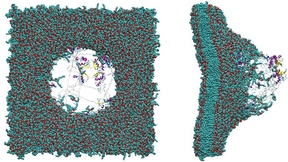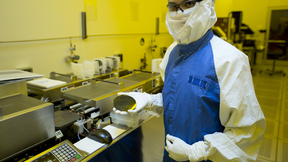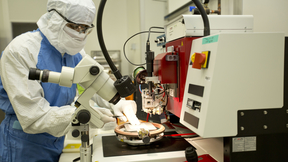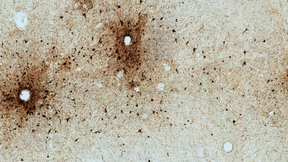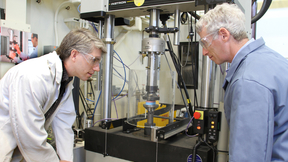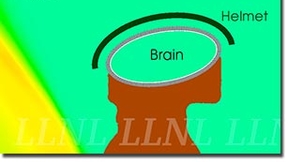Back
Traumatic brain injury
LLNL team demonstrates protein damage by shock waves in traumatic brain injury patients
New research by Lawrence Livermore scientists shows how shock waves can damage membrane proteins in traumatic brain injury patients.Blast-induced traumatic brain injury (TBI) from improvised explosive devices is the most frequent wound occurring from the conflicts in Afghanistan and Iraq. Estimates suggest more than 200,000 veterans have had at least one traumatic brain…
DARPA taps Lawrence Livermore to develop world's first neural device to restore memory
LIVERMORE, Calif. - The Department of Defense's Defense Advanced Research Projects Agency (DARPA) awarded Lawrence Livermore National Laboratory (LLNL) up to $2.5 million to develop an implantable neural device with the ability to record and stimulate neurons within the brain to help restore memory, DARPA officials announced this week.The research builds on the…
Lawrence Livermore Lab awarded $5.6 million to develop next generation neural devices
LIVERMORE, Calif. - Lawrence Livermore National Laboratory recently received $5.6 million from the Department of Defense's Defense Advanced Research Projects Agency (DARPA) to develop an implantable neural interface with the ability to record and stimulate neurons within the brain for treating neuropsychiatric disorders.The technology will help doctors to better understand…
New research shows brain injuries from blasts similar to football impacts
In an advance that may someday provide health benefits for soldiers and athletes, a team of researchers has discovered a mechanism that could be the cause of traumatic brain injuries (TBI) in blast-exposed soldiers. The breakthrough study, published today in the journal Science Translational Medicine , finds that the brain injuries suffered by soldiers from improvised…
LLNL researchers find way to mitigate traumatic brain injury in study for Joint IED Defeat Organization
Researchers at Lawrence Livermore National Laboratory (LLNL) have found that soldiers using military helmets one size larger and with thicker pads could reduce the severity of traumatic brain injury (TBI) from blunt and ballistic impacts. Their results came after a one-year study funded by the U.S. Army and the Joint IED Defeat Organization (JIEDDO) to compare the…
LLNL research reveals how blast waves may cause human brain injury even without direct head impacts
LIVERMORE, Calif. - New research on the effects of blast waves could lead to an enhanced understanding of head injuries and improved military helmet design.Using numerical hydrodynamic computer simulations, Lawrence Livermore scientists Willy Moss and Michael King, along with University of Rochester colleague Eric Blackman, have discovered that nonlethal blasts can induce…


